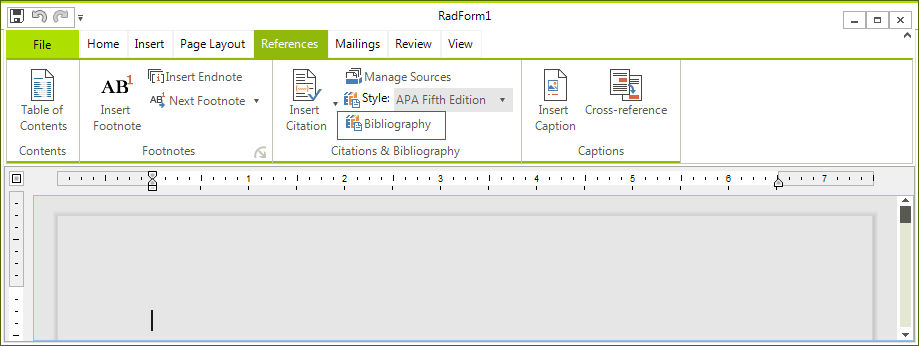

Writing a text editor in any major toolkit is surprisingly similar, no matter which one you choose.
How to add footnote in rich text editor how to#
If you want to use a different language or a different toolset, this article can still be useful in giving you an idea of how to approach the problem. For this article, I use Java with its built-in Swing widget set. There are many to choose from, including Qt, FLTK, or GTK, but be sure to review the documentation first to ensure it has the features you expect. To make this exercise realistic, it’s best to choose a language with a good GUI toolkit. You might find yourself eager to use a tool of your own construction, and the more you use it, the more you might be inspired to add to it, learning even more about the programming language you’re using. As a result, a basic text editor is a surprisingly fun and elucidating, though intermediate, lesson in programming. The components around the text editing, such as a menu bar, file chooser dialogues, and so on, are easy to drop into place. In fact, most programming toolkits already have most of the text editor parts ready for you to use. But then again, it’s also not as hard as you might fear to build a basic one. Make no mistake: building a really good text editor is a lot harder than it may seem. But sometimes, the most satisfying answer to any question is the one you build yourself. There are those that run in the terminal, in a GUI, in a browser, and in a browser engine. There are a lot of text editors available. Running Kubernetes on your Raspberry Pi.A practical guide to home automation using open source tools.6 open source tools for staying organized.An introduction to programming with Bash.A guide to building a video game with Python.instance ( string) (optional) limits the button to a specific instance of Quicktags.priority ( int) (optional) is a number representing the position of the button in the toolbar.

How to add footnote in rich text editor code#
A JavaScript API provides an easy way to add custom buttons and inject code and content into the editor textarea. The image shows the default buttons of the WordPress text editorĭefault settings can be overridden thanks to the Quicktags API. The editor toolbar provides a set of buttons (called quicktags) that allow users to quickly inject a good number of tags into the HTML post structure.īy default, WordPress provides the following quicktags: However, the text editor is not just a form element.

Including the WordPress Editor Into Front Pages.

I will present you with a plugin that allows users to configure the text editor from the WordPress admin panel quickly. The final section of this post is dedicated to non-developers. First, we will dive into the topic from a developer perspective: we’ll look at the Quicktags JS API, the quicktags_settings filter, and the wp_editor() function. The text editor shows exactly the HTML structure of the post content, and it grants complete control over user input, so this post is all about WordPress text editor. What’s New in WordPress 5.0 (How to Prepare for Gutenberg) For this reason, you may preferĭiving Into the New Gutenberg WordPress Editor (Pros and Cons) WordPress will preserve the post content, but TinyMCE would convert special characters into the corresponding HTML entities. Users can easily switch from visual to text mode by clicking on the upper right labels. Discover how Kinsta customers are seeing up to a 200% increase in performance.


 0 kommentar(er)
0 kommentar(er)
